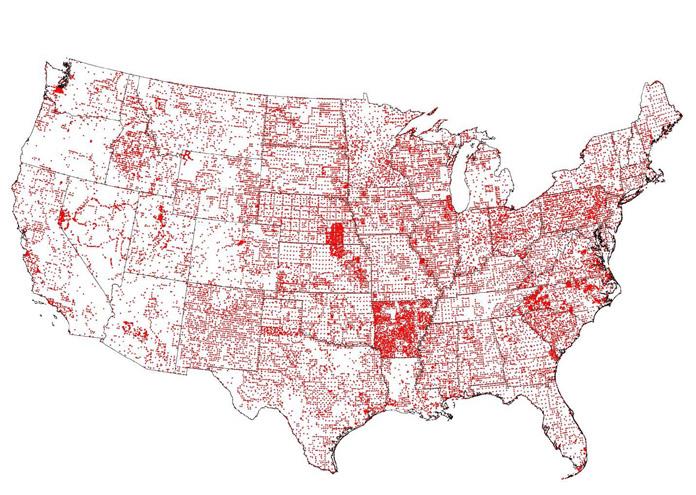Geospatial Research and Science
Geospatial Research and Science provides subject matter expertise in the areas of scripting, remote sensing analysis, image classification, and general geospatial support.
Products
LCAT (Land Change Analysis Tool) Data – The land change analysis tool outputs maps and raster data that illustrate land cover types using NAIP imagery. The output data has a 60cm pixel size. Currently, LCAT is covering several states in the southeastern US for different years of NAIP.
Historical Imagery Orthorectification – FPAC’s vast imagery library needs to be enabled for use before it becomes useful to the broad consumer. Orthorectification corrects an aerial photograph or satellite image geometrically such that the scale is uniform following a given map projection. This process facilitates the images use in modern applications and systems, making the USDA Film Library a substantial source of information for all. GEO’s completed orthoimagery catolog will cover the years 1955 to 1994 and will have different ground sample distances. The resolution will vary from 25cm to 2 meter depending on the nominal scale of the imagery.
Natural Agriculture Imagery Program (NAIP) - NAIP is a federally funded aerial imagery program. The program acquires approximately half of the contiguous United States each year. The program started in 2002. Initially imagery was 2-meter resolution with 3 bands (RGB). Beginning in 2003 and by 2004, all NAIP imagery was 1-meter resolution. Since 2019, NAIP moved to a 60-centimeter resolution. The geospatial services team supports NAIP through subject matter expertise.
Services
Geospatial Scripting, Application, and Model Development – The team develops web applications within the ESRI environment, scripts, and models (using R Studio, Python, etc.) to assist and enhance geospatial projects. Development includes, inspections tools, change detection and land classification models.
Support ArcGIS Online (AGOL) – The team provides complete administration and support for AGOL. This includes creating and maintaining accounts, creating maps, and general support.
LCAT Service – The land change analysis tool outputs maps and data services for GEO and USDA customers. The LCAT data is generated through point classification and uses R and python scripting.
Historical Imagery Orthorectification Service – The team provides orthorectification services to customers of non-georeferenced imagery.


